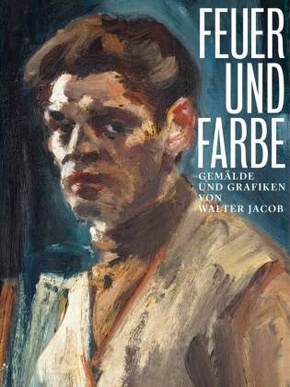Feuer und Farbe - Gemälde und Grafiken von Walter Jacob - Gemälde und Grafiken von Walter Jacob (1893-1964)
| Verlag | DCV Dr. Cantzsche |
| Auflage | 2024 |
| Seiten | 144 |
| Format | 21,1 x 1,3 x 28,1 cm |
| Gewicht | 614 g |
| ISBN-10 | 396912199X |
| ISBN-13 | 9783969121993 |
| Bestell-Nr | 96912199A |
Walter Jacob war ein Maler, in dessen Schaffen und Biografie sich die Brüche des 20. Jahrhunderts verdichteten. Der Naturbetrachtung und dem Selbstporträt blieb er sein Leben lang treu, doch stilistisch könnte sein uvre kaum widersprüchlicher sein. Vom Impressionismus über den Expressionismus gelangte er zu einem ins Abstrakte gehenden Ausdruck, wobei er die moderne Malerei Zeit seines Lebens ablehnte. Im NS galt sein Frühwerk als "entartet", was ihn als überzeugten Nationalsozialisten und tätigen SA-Mann dazu brachte, sich nicht nur ideologisch, sondern auch ästhetisch auf die neue Zeit einzustellen: Es entstanden ab Mitte der 1930er Jahre naturalistisch, teils neusachlich anmutende Darstellungen "volksnaher" Motive wie Landschaften, Tiere, Soldaten etc. Bezeichnend ist jedoch, dass auf mancher Rückseite seiner Leinwände Werke zu finden sind, mit denen er seiner Freude an Farb- und Formexperimenten Ausdruck verlieh. Im Alter setzte er denn auch mit abstrakten Landschaften einen Schlusspunkt unter sein uvre. Dieser Katalog vereint Werke, die Jacobs wechselhaften Lauf nachvollziehbar machen, flankiert von (kunst-)historischen Abhandlungen, in denen sein Schaffen kontextualisiert wird.
Walter Jacob was a painter whose oeuvre and life reflected the discontinuities of the twentieth century in condensed form. Contemplative natural scenes and the self-portraits were constants to which he hewed throughout his career; in stylistic terms, however, his oeuvre could hardly be more contradictory. Working first in the Impressionist, then in the Expressionist style, he eventually forged a form of expression tending toward abstraction, although he rejected modernist painting throughout his life. The Nazis considered his early work "degenerate," which led him-a committed National Socialist and active member of the SA-to adapt not just his ideological convictions, but also his aesthetics to the new era: starting in the mid-1930s, he produced naturalistic depictions, sometimes suggestive of the New Objectivity, of "popular" motifs like landscapes, animals, soldiers, and more. Tellingly, though, the backs of some of his canvases are taken up by works that suggest the pleasure he took in experimenting with color and form. The same tension is palpable in the abstract landscapes of his late oeuvre. This catalog gathers works to retrace Jacob's checkered career, complemented by (art) historical essays that embed his output in its context.

